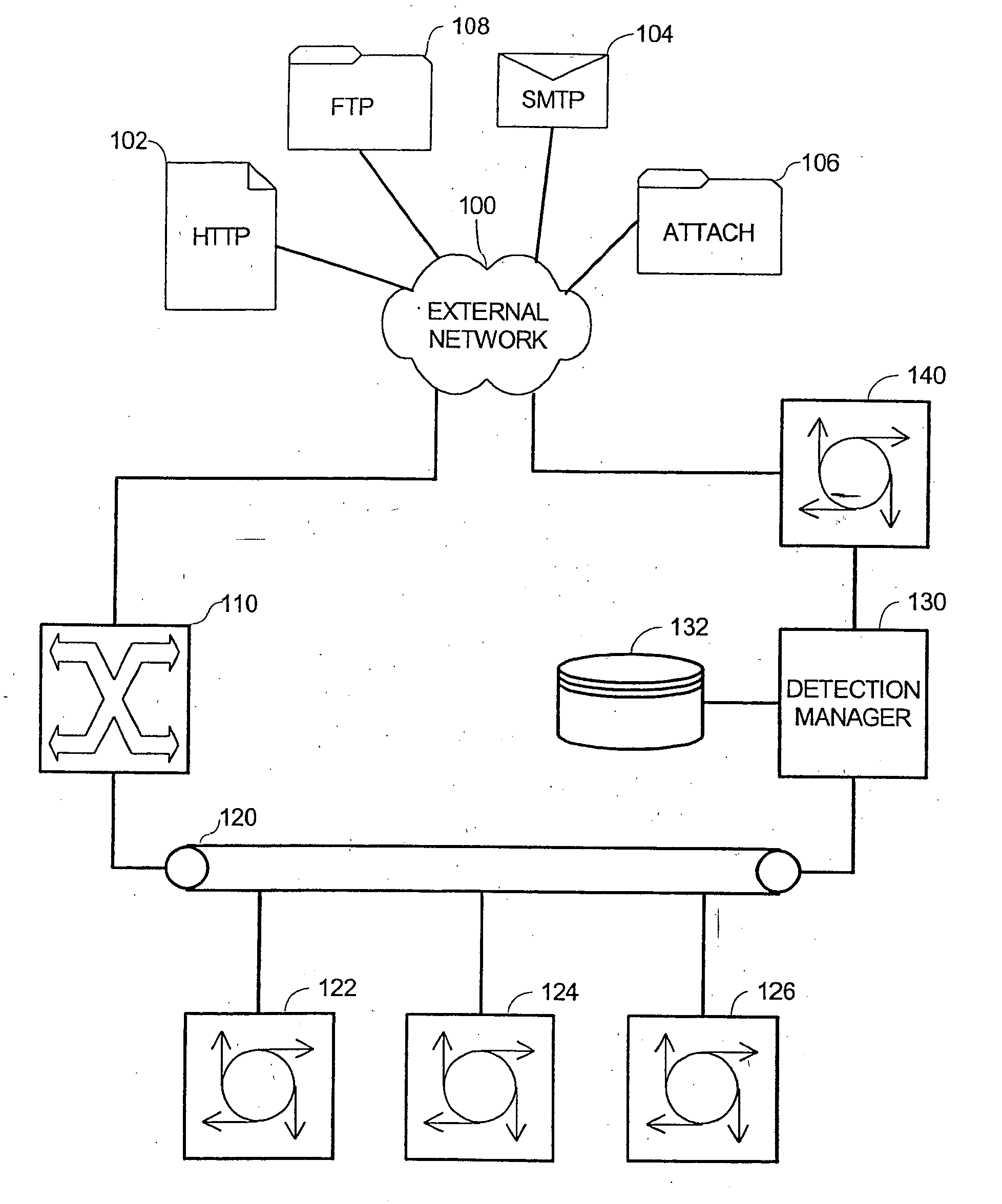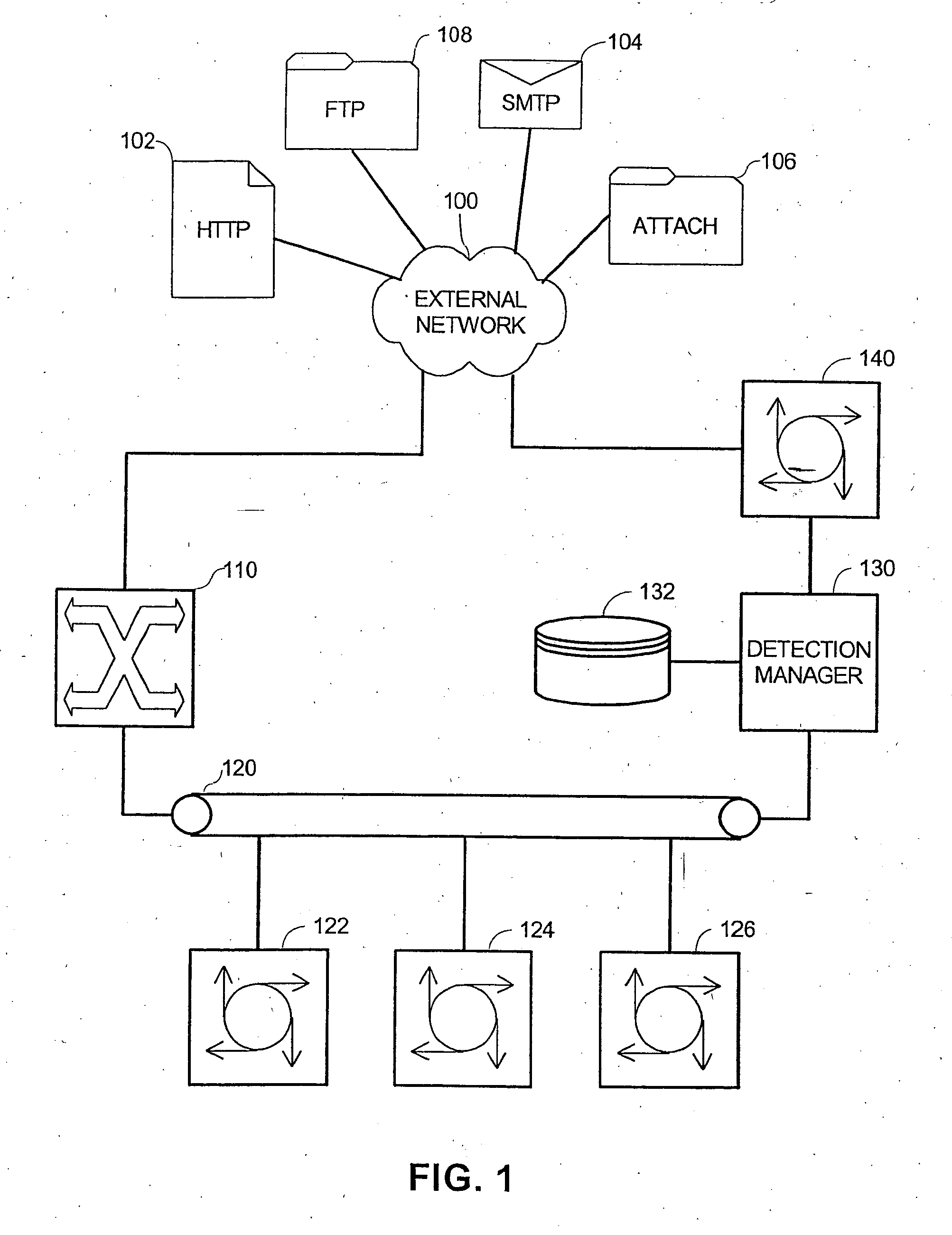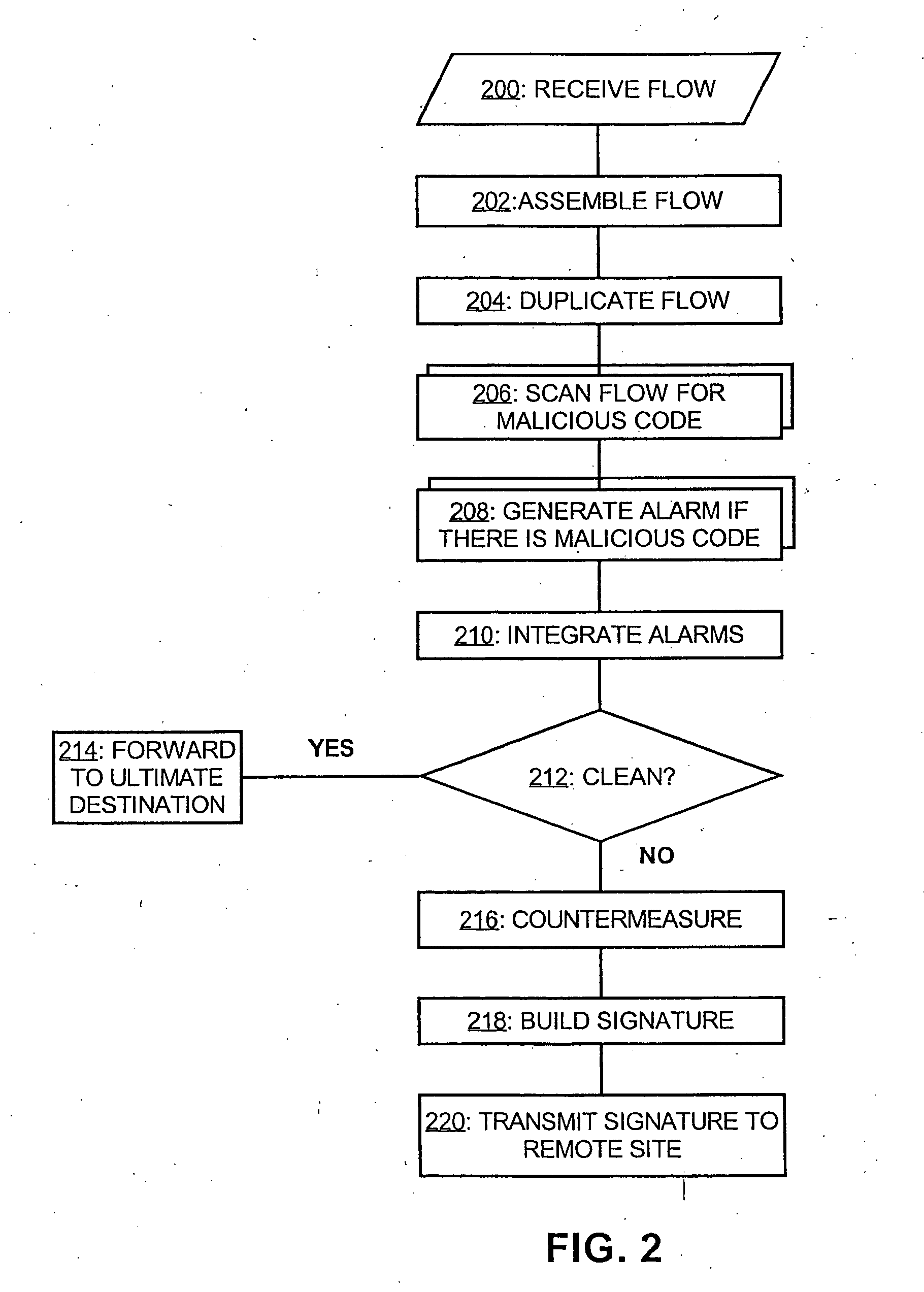System and method for malicious code detection
a malicious code and detection system technology, applied in the field of computer security, can solve the problems of not having a single anti-virus scanner that is 100% coverage of known viruses, unable to detect malicious code quickly, etc., to achieve the effect of reducing the latency of content scanning and reducing overhead
- Summary
- Abstract
- Description
- Claims
- Application Information
AI Technical Summary
Benefits of technology
Problems solved by technology
Method used
Image
Examples
Embodiment Construction
[0021] A system, method, and software for malicious code detection are described. In the following description, for the purposes of explanation, numerous specific details are set forth in order to provide a thorough understanding of the present invention. It will be apparent, however, to one skilled in the art that the present invention may be practiced without these specific details. In other instances, well-known structures and devices are shown in block diagram form in order to avoid unnecessarily obscuring the present invention.
[0022] Malicious Code Detection System
[0023]FIG. 1 depicts one embodiment of a malicious code detection system in accordance the present invention, whose operation is described in conjunction with FIG. 2. The malicious code detection system, which is suitable for deployment by Internet Service Providers (ISPs), network service providers, and corporate information systems departments for responsible for the employees' email and web browsing, is coupled t...
PUM
 Login to View More
Login to View More Abstract
Description
Claims
Application Information
 Login to View More
Login to View More - R&D
- Intellectual Property
- Life Sciences
- Materials
- Tech Scout
- Unparalleled Data Quality
- Higher Quality Content
- 60% Fewer Hallucinations
Browse by: Latest US Patents, China's latest patents, Technical Efficacy Thesaurus, Application Domain, Technology Topic, Popular Technical Reports.
© 2025 PatSnap. All rights reserved.Legal|Privacy policy|Modern Slavery Act Transparency Statement|Sitemap|About US| Contact US: help@patsnap.com



